Pros: Class-leading passenger and cargo space; hybrid powertrains; Lexus dependability
Cons: Some frustrating tech controls; it’s basically a fancy Grand Highlander; droning TX 550h+ engine
Feel free to call it the Lexus Texas, because the 2024 Lexus TX is certainly big enough to satisfy the old adage that everything is bigger in the Lone Star State. It’s definitely the biggest Lexus ever, in terms of length and interior capacity, if not weight. While there have previously been three-row Lexus models, none have actually offered a third row that’s especially spacious or comfortable. The TX’s is not only that, it’s actually the most spacious and comfortable in the three-row luxury crossover segment. The TX also has the most cargo space behind that row, by quite a large margin, in fact.
So it’s big, and it’s a crossover, unlike the truck-based Lexus GX and LX models that may be swell off-road but suffer from relatively cumbersome dynamics on-road as well as less space-efficient interiors. Their fuel economy is also, well, bad. Not so the TX, which offers three efficient powertrains including the TX 500h hybrid and TX 550h+ plug-in hybrid. Put together this fuel sipping with those jumbo proportions and the TX is impossible to ignore.
But should you take one home? If there’s a main reason for pause is that the TX is really just a Toyota Grand Highlander with fancier paint, plusher interior materials and upgraded hybrid powertrains. You’ll get the same space and most of the same features, most notably the similarly frustrating infotainment system, in its Toyota sibling. The TX even looks more like the Grand Highlander than it does other Lexus models. Maybe this shared DNA won’t matter for some, maybe it means you should visit a Toyota dealer instead, maybe you’ll be happier with a Volvo XC90 or Infiniti QX60 as a result. It’s up to you.
Interior & Technology | Passenger & Cargo Space | Performance & Fuel Economy
What it's like to drive | Pricing & Trim Levels | Crash Ratings & Safety Features
What's new for 2024?
The TX is an all-new model.
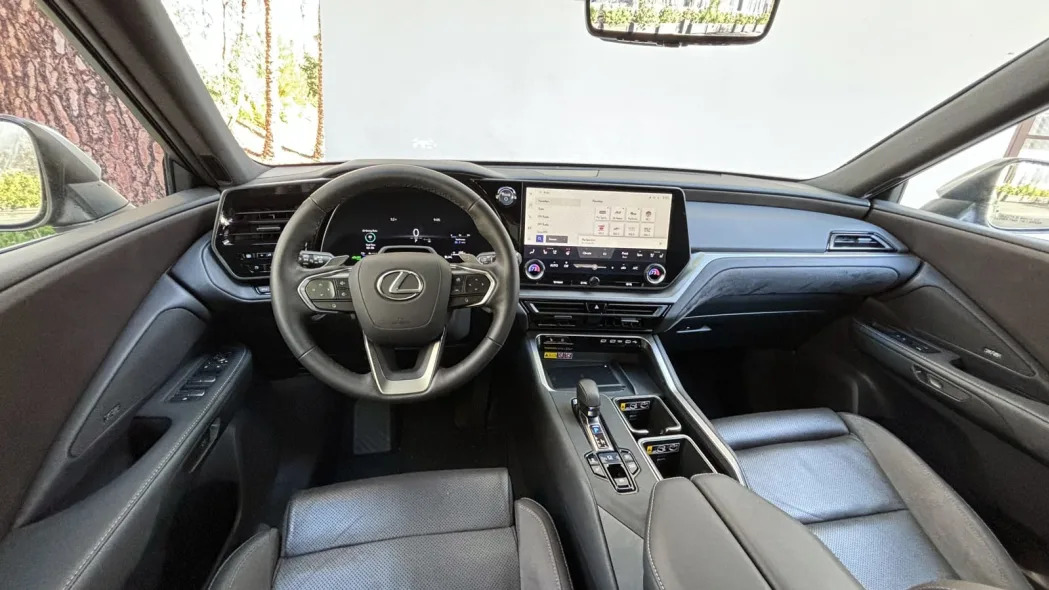
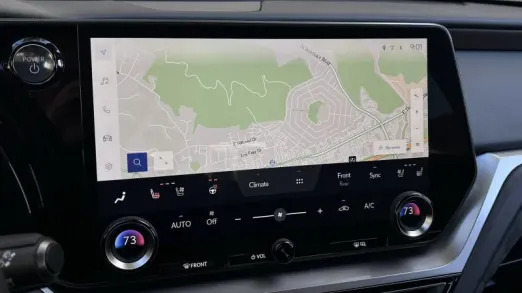
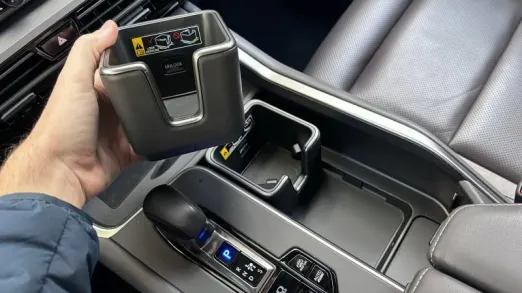
What are the Lexus TX interior and in-car technology like?
The TX offers the usual impeccable Lexus build quality with plush materials everywhere you look. Soft-padded simulated leather or suede are everywhere, while the switchgear is top notch. We don’t quite understand the advantage of the weird, removable cup-cubes that can move between the front and rear consoles, but it’s at least a key point of difference between the TX’s interior functionality and the Grand Highlander’s.
There certainly isn’t much of a difference in terms of the touchscreen infotainment system, which is identical apart from being 14 inches instead of 12. That added real estate is really only utilized by adding the climate controls to its purview, though. Everything else is cut-and-paste, including the often-frustrating radio controls and the navigation system that defaults back to forward-up view every time you switch to another menu. If the driver selects North Up, why does Lexus/Toyota think that’s a temporary preference?
Much, much worse are the unlabeled steering wheel buttons that require you to look at the head-up display to see what they’re controlling. You even have to use them to cycle through trip computer information in the traditional digital instrument panel. It’s confusing, distracting and a constant source of frustration made even worse if you’re wearing polarized sunglasses.
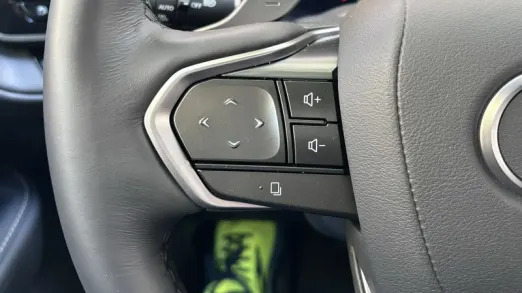
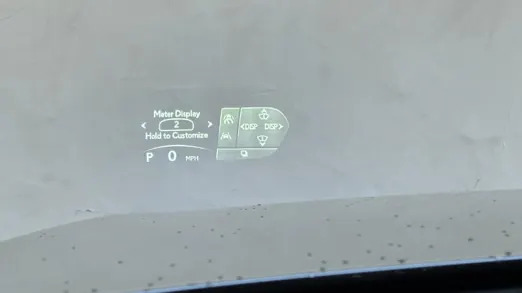
How big is the Lexus TX?
Three-row luxury crossovers have traditionally been less spacious than their non-luxury counterparts. Not so the Lexus TX. It has basically the same dimensions as the Toyota Grand Highlander, which is one of the largest non-luxury crossovers. As a result, its third row is spacious enough for adults and big teenagers, while more comfortably accommodating children. One point of difference, though: the TX only has two seatbelts in the third row and therefore a maximum of seven passengers (or six with second-row captain’s chairs). The Grand Highlander is 8/7 depending on the second-row. And should you be wondering about how the Lexus GX and LX compare to the TX in terms of interior space, the answer is, they’re not even close.
Cargo space is similarly best-in-class. Indeed, the TX swallowed all six suitcases of our standardized luggage test behind its raised third row – a feat matched only by the Grand Highlander, Jeep Wagoneer and extended-length truck-based SUVs.
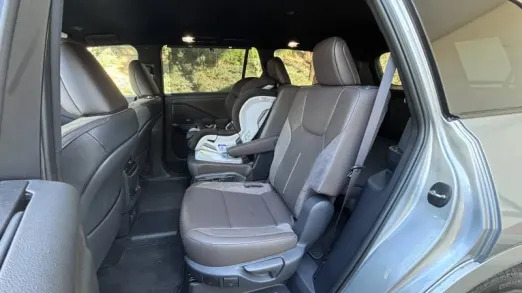
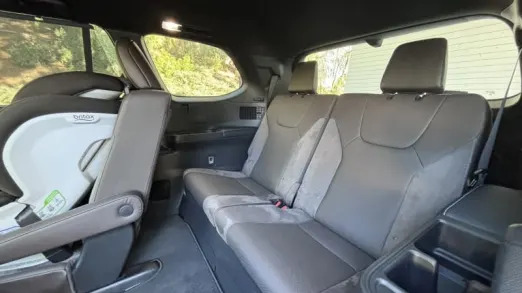
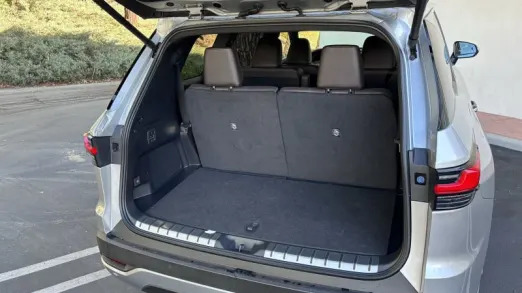
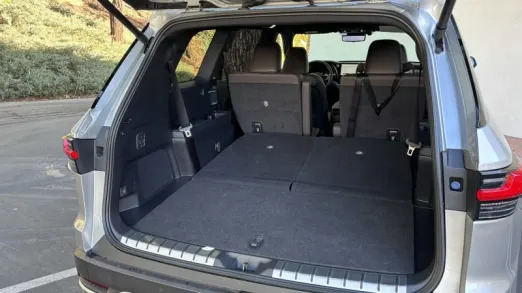
What are the Lexus TX fuel economy, range and performance specs?
There are three models that correspond to different powertrains: TX 350, TX 500h and TX 550h+.
The TX 350 is powered by a 2.4-liter turbocharged inline-four that produces 275 horsepower and 317 pound-feet of torque. It is paired with an eight-speed automatic; front-wheel drive is standard and all-wheel drive optional. Lexus says it’ll go from 0-60 mph in about 8 seconds, which is on the slow side for a luxury three-row crossover. EPA-estimated fuel economy is 20 miles per gallon city, 26 mpg highway and 23 mpg combined with AWD and basically the same at 21/27/23 with FWD.
The TX 500h is all-wheel-drive-only. It has a distinctive hybrid system known as Direct4 that utilizes a single electric motor sandwiched between the 2.4-liter turbo engine and a conventional six-speed automatic transmission. A separate electric motor powers the rear wheels, with as much as 80% of total output going through the rear. This is fundamentally different than other Toyota/Lexus hybrids, and it results in a more normal and performance-oriented driving experience. Its output is 366 hp and 309 lb-ft of torque, and it hits 60 mph in 6.1 seconds. It also doesn’t result in as much fuel savings over the standard engine: 27 mpg city, 28 mpg highway and 27 mpg combined. If you do want more of a fuel sipper, the Grand Highlander is available with a more conventional and efficient hybrid powertrain.
Finally, the TX 550h+ is a plug-in hybrid that is also AWD-only. It does work similarly to the Toyota/Lexus norm, with an engine (a 3.5-liter V6) and electric motor up front working in concert through an electronically control continuously variable transmission (sounds complicated, it is). A separate electric motor powers the rear axle, but it’s more of a reactive system that responds mostly to a loss of traction up front. Total output is 404 horsepower and it hits 60 mph in 5.9 seconds with both the engine and plug-in battery pitching in. Like other plug-in hybrids, it can travel using electricity alone for 33 miles. Thereafter, it behaves like a typical Lexus hybrid with the V6 being supported by the electric motor. Estimated fuel economy is 29 mpg city, 28 mpg highway and 29 mpg combined, so it literally pays to charge up at night and use that e range.
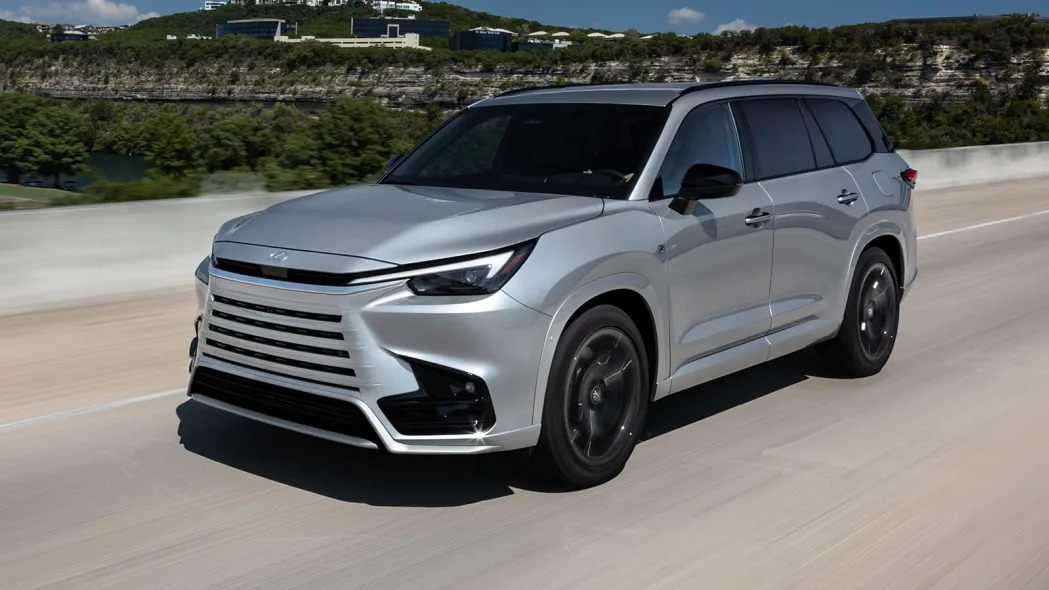
What's the TX like to drive?
The TX is a big, comfy thing that you pilot more than drive. The steering is precise enough, the suspension composed enough and you’re unlikely to notice any bad habits. Basically, you’ll be hard-pressed to detect an appreciable difference between the TX 350 and the Grand Highlander. Also, even if it’s honestly hard to quantify, there’s just something that doesn’t feel as premium about the driving experience as what you’d find in an Acura MDX, Audi Q7, Genesis GV80 or Volvo XC90. The main exception would be the TX 500h (pictured above). It comes only with the F Sport Performance package, which adds an adaptive suspension and rear-wheel steering that significantly improve handling by reducing body roll and increasing agility around tighter corners. It also has the most performance-oriented powertrain along with good fuel economy given that performance.
More to that point, your powertrain choice will alter the driving experience considerably, especially when in comparison to the Grand Highlander and most of those rival three-row SUVs. The TX 350’s turbo engine is literally what you get in its Toyota sibling, and on paper, its performance underwhelms for the segment. That leaves the hybrids as the right place to look if you’re interested in the TX at its most competitive and desirable. Beyond the 500h described above, the TX 550h+ is one of the only luxury three-row plug-in hybrids, along with the Volvo XC90 and Mazda CX-90. There’s something very satisfying about cruising silently along using electricity alone with three rows of passengers aboard. For school drop-offs and around-town errands, it’s exceptional, while its gas engine provides the long-legs needed for road trips without recharging worries. That said, refinement and interior noise take a big hit once the electric range runs out. The e-CVT makes the V6 drone loudly as it does in other Lexus/Toyota hybrids.
What other Lexus TX reviews can I read?
2024 Lexus TX First Drive Review: The proper three-row SUV Lexus needed
Features more in-depth driving impressions of all three models, plus greater details about its engineering and design.
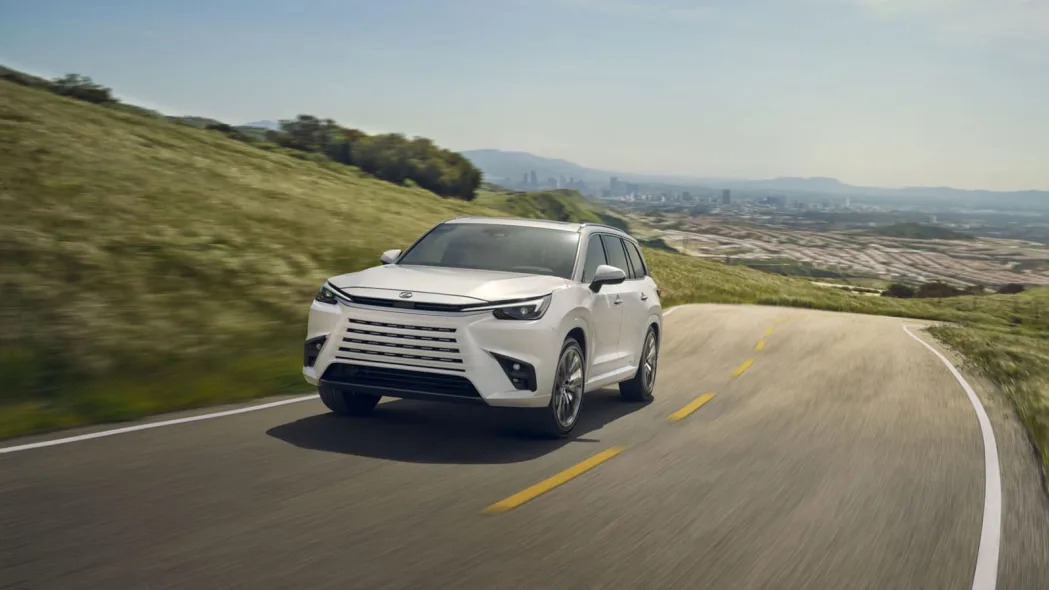
Lexus TX Luggage Test: How much fits behind the third row?
The TX largely mirrors the exceptional performance of the Grand Highlander in our real-world cargo test, and reveals itself to have best-in-class space behind the third row.

What is the 2024 Lexus TX price?
Pricing starts at $55,050 for the TX 350 with front-wheel drive, which is about $10,000 than the well-equipped base Grand Highlander with the same powertrain. The TX has a bit more equipment, most notably a bigger infotainment screen, plus nicer interior trappings, exterior paint and other refinements. There’s also more equipment available to the upper TX trim levels than Toyota offers, plus the exclusive plug-in hybrid powertrain option of the TX 550h+.
The TX features three models: TX 350, TX 500h and TX 550h+. Each of these corresponds to a different powertrain, described above. Then there are trim levels – base, Premium, Luxury – that add increasing levels of equipment. Only the TX 350 has access to all of them, however. The TX 550h+ is Luxury only; the TX 500h can be had as either the Premium or Luxury, but with a mandatory and exclusive F Sport Performance package. This adds unique styling elements inside and out, sport seats and, most notably, an adaptive variable suspension and rear-wheel steering. It is pictured below in silver.
All prices below include the $1,350 destination charge.
TX 350: $56,400
TX 350 AWD: $57,910
TX 350 Premium: $59,800
TX 350 Premium AWD: $61,400
TX 350 Luxury: $62,300
TX 350 Luxury AWD: $63,900
TX 500h F Sport Performance Premium AWD: $70,700
TX 500h F Sport Performance Luxury AWD: $74,000
TX 550h+ Luxury AWD: $79,400


TX 500h F Sport Performance and TX 350 Luxury
What are the Lexus TX safety ratings and driver assistance features?
Every 2024 TX model includes forward collision warning with pedestrian detection and automatic emergency braking, an intersection support that detects cross-traffic of pedestrians and vehicles, lane-keeping assist, blind-spot and rear cross-traffic warning, and adaptive cruise control with lane-centering steering assist and “Curve Speed Management” that automatically reduces speed through corners. We’ve found this latter feature can be frustrating, if well intentioned. We also find the adaptive cruise control’s functionality to be significantly impaired by the obtuse steering wheel/head-up display controls.
The Insurance Institute for Highway Safety hadn’t submitted the TX to the full assortment of tests at the time of this writing. Thus far, it received a second-best score of “Acceptable” in the “small overlap front: driver side” test and top “Good” scores for the passenger side version of that test plus the “moderate overlap front: original test” and “side: updated test.”











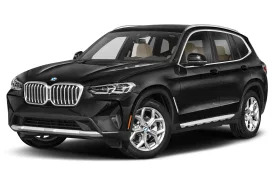

Sign in to post
Please sign in to leave a comment.
Continue